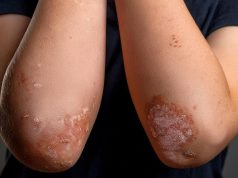Consistent but mostly statistically nonsignificant associations observed for gestational phthalate metabolite levels and lower FVC, FEV1 at ages 4 to 11 years
WEDNESDAY, Oct. 19, 2022 (HealthDay News) — Gestational exposure to phthalates is associated with reduced lung function during childhood, according to a study published in the Nov. 1 issue of Environmental Pollution.
Magda Bosch de Basea, Ph.D., from the Barcelona Institute for Global Health in Catalonia, Spain, and colleagues measured nine phthalate metabolites (MEP, MiBP, MnBP, MCMHP, MBzP, MEHHP, MEOHP, MECPP, and MEHP) in the urine of 641 gestating women and measured the forced vital capacity (FVC), forced expiratory volume in one second (FEV1), and FEV1/FVC in their offspring at ages 4, 7, 9, and 11 years.
The researchers found a consistent association for phthalate metabolite gestational levels with lower FVC and FEV1 at all ages when assessed separately and together as a mixture; however, most of the associations were not statistically significant. There was an association for a 10 percent increase in MiBP with lower FVC and FEV1 z-scores (−0.02 and −0.02) at age 4 years. An increase in MEP and MnBP was associated with similar significant reductions in FVC at ages 4 and 7 years, and an increase in MBzP was associated with lower FEV1 at age 4 years. MBzP was identified as an important contributor to the phthalate mixture effect.
“Given the ubiquity of phthalate exposure and its established endocrine disrupting effects in children, our findings support current regulations that limit phthalate exposure,” the authors write.
One author disclosed ties to the pharmaceutical industry.
Copyright © 2022 HealthDay. All rights reserved.








